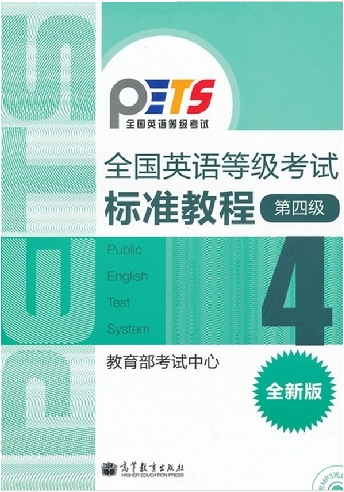一、动词时态、语态
1、现在进行时
(1)表示说话时或现阶段正在进行的动作,常与now,at present等时间状语连用。如:
What are you doing now?
(2)和always,continually等连用,表一种经常反复的动作,常含有某种情感。如:
He is always doing good deeds.
2、现在完成时
主要表示动作发生在过去,对现在仍有影响,或动作一直延续到现在,或可能还要继续下去,常与just,already,so far,once,never等词连用。如:Have you ever been to Beijing?
3、一般现在时
(1)表示经常发生的动作或现在存在的状态,常与sometimes,always,often,every day等时间状语连用。如:Sometimes,we go swimming after school.
(2)表示客观真理、科学事实等。如:The earth goes round the sun.
4、一般将来时
表示将来某一时间要发生的动作或存在的状态,常与tomorrow,next year等连用。如:
I'll meet you at the school gate tomorrow morning.
We're going to see a film next Monday.
5、一般过去时
表示在过去某一时间或某一阶段内发生的动作或存在的状态,常与yesterday,last year,in 1998,a moment ago等词连用。如:It happened many years ago.
6、过去进行时
表示过去某一时刻或某一时期正在发生的动作。如:
What were you doing this time yesterday?
7、过去完成时
表示在过去某一时间或动作之前已经发生或完成了的动作。如:
The train had already left before we arrived.
8、一般过去将来时
表示说话人从过去的角度来看将来发生的动作。如:
He said he would come,but he didn't.
9、被动语态被动语态的时态
二、动词短语
英语中有许多短语动词在意义上是一个整体,其用法有的相当于及物动词,有的相当于不及物动词,有的兼有及物动词和不及物动词的特征。英语短语动词的构成主要有以下六种:
(1)动词+介词
常见的有look for,look after,send for,care about,ask for,laugh at,hear of(from),add to,lead to等。这类短语动词的宾语只能放在介词后。如:
Don't laugh at others.
I didn't care about it.
(2)动词+副词
常见的有give up,pick up,think over,find out,hand in,point out等。这类短语动词的宾语如果是名词,既可放在副词前边,又可放在副词后边;宾语如果是人称代词或反身代词,则要放在副词前边。如:You'll hand in your homework tomorrow.
Please don't forget to hand it in.
(3)动词+副词+介词
常见的有look down upon,go on with,break away from,add up to,catch up with等。这类短语动词的宾语只能放在介词后边。如:
All his money added up to no more than$100.
After a short rest,he went on with his research work.
(4)动词+名词+介词
常见的有take care of,make use of,pay attention to,make fun of等。这类短语动词的宾语只能放在介词后边。如:You should pay attention to your handwriting.
We should make full use of our time.
(5)动词+形容词
常见的有leave open,set free,cut open等。这类短语动词的宾语如果是名词,则宾语可放在形容词的前边,也可放在后边;宾语如果是人称代词或反身代词,则必须放在形容词前边。如:
The prisoners were set free.
He cut it open.
(6)动词+名词
常见的有take place,make friends等。这类短语动词用作不及物动词。如:
This story took place three years ago.
I make friends with a lot of people.
(7)辨析
give away(让给,暴露)和give up(放弃,停止)
put away(放起,收起)和put out(扑灭)
turn up(出席,放大)和turn on(打开)
keep out(阻止)和keep off(不让靠近)
make up(编造,补上)和make out(辨认)
take off(脱,起飞)和take out(拿出)
三、动词不定式
1、不定式的形式。以动词write为例。
式|语态主动语态被动语态
一般式to write to be written
完成式to have written to have been written
进行式to be writing
完成进行式to have been writing
2、不定式的句法功能
(1)作主语
To hear from you is nice.
To be a good teacher is not easy.
不定式作主语时,为了保持句子的平衡,往往以it作形式主语,而不定式置于谓语动词后。如:It's nice to hear from you.
It's not easy to be a good teacher.
(2)作宾语
通常用于want,hope,wish,like,need,hate,begin,start,remember,agree,learn,pretend,refuse,manage,help等词后。如:I forgot to lock the door.
Please remember to write to me.
(3)作表语
My job is to pick up letters.
He seemed to have heard nothing.
(4)作定语
不定式作定语时,须放在它所修饰的名词或代词后。如:
I have two letters to write.
I have a lot of work to do.
(5)作宾补
通常用于want,wish,ask,order,tell,know,help,advise,allow,cause,force等词后。如:
He ordered her to leave at once.
He was forced to obey his order.
(6)作状语
He got up early to catch the first bus.
He worked hard to catch up with the other students.
(7)作独立成分
To tell you the truth,I told a lie.
(8)"疑问词+不定式"结构。如:
I don't know how to choose them.
I cannot decide where to go.
(9)不定式的否定式。如:
I decided not to go.
(10)不定式的完成式。如:
He seemed to have cleaned the room before I came in.
The boy is said to have been sent to the hospital last week.
(11)too…to结构。如:
He was too excited to go to sleep.
He was only too glad to go.(他太高兴了,乐意去)
(12)主动表被动。如:
The book is easy to read.
I have a book to read.
注:以上内容来源于网络,仅供考生参考













